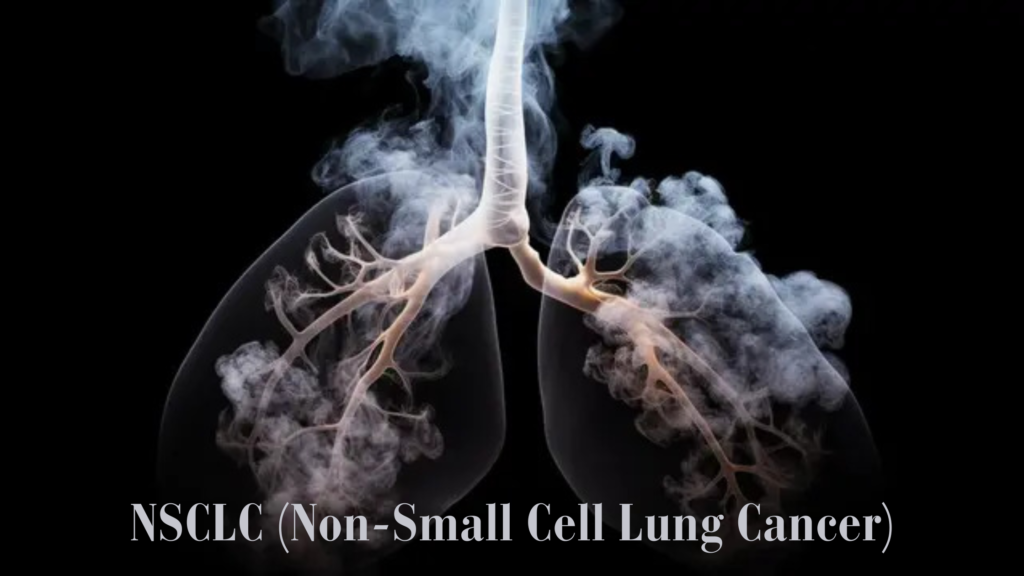🫁 NSCLC (Non-Small Cell Lung Cancer) – Overview
Non-Small Cell Lung Cancer (NSCLC) is the most common type of lung cancer, accounting for about 85% of all lung cancer cases. It tends to grow and spread more slowly than small cell lung cancer (SCLC).
🏷️ Types of NSCLC
| Type | Description |
|---|---|
| Adenocarcinoma | Most common subtype; starts in mucus-producing cells, usually in the outer parts of the lungs |
| Squamous Cell Carcinoma | Often linked to smoking; starts in flat cells lining the airways, usually central lungs |
| Large Cell Carcinoma | Less common; grows and spreads quickly; can occur anywhere in the lungs |
📋 Risk Factors
- Smoking (major risk factor)
- Exposure to secondhand smoke
- Radon gas exposure
- Asbestos and other carcinogens
- Family history of lung cancer
- Air pollution
🩺 Symptoms
- Persistent cough or change in cough
- Coughing up blood (hemoptysis)
- Chest pain
- Shortness of breath
- Unexplained weight loss
- Fatigue
- Hoarseness
- Recurrent respiratory infections (pneumonia or bronchitis)
🔬 Diagnosis
- Chest X-ray and CT scan to detect lung masses
- Biopsy (bronchoscopy, needle biopsy) to confirm cancer type
- PET scan to check for spread (metastasis)
- Mediastinoscopy or other lymph node sampling for staging
- Molecular testing of tumor tissue to guide targeted therapy (e.g., EGFR, ALK mutations)
💊 Treatment
- Surgery (if detected early and tumor localized)
- Radiation therapy
- Chemotherapy
- Targeted therapy (for tumors with specific genetic mutations)
- Immunotherapy (boosts immune response against cancer)
- Often a combination of the above, depending on stage and health status
🔄 Prognosis
- Depends on stage at diagnosis and overall health
- Early-stage NSCLC has better outcomes with surgery
- Advanced stages may require systemic therapies with variable survival
